The habitat of the Emydura genus
Click on the Graphs to Enlarge them!
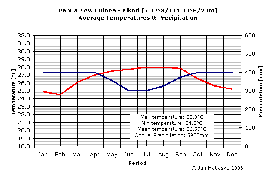 Emydura subglobosa subglobosa, Red-bellied Turtle (Krefft, 1876).
Emydura subglobosa subglobosa, Red-bellied Turtle (Krefft, 1876).
Natural habitat of Emydura subglobosa subglobosa is restricted to the mostly southern flowing rivers and lakes of Irian Jaya and Papua New Guinea. It was also spotted in the Jardine river in Australia, but a confusion of the species with one of the Emydura species endemic to Australia is highly probable. Emydura subglobosa subglobosa is found in permanent water only. The species inhabits water bodies that have many areas with abundant aquatic vegetation. Bottom of these water systems is made of either gravel or sand or a mixture of both.
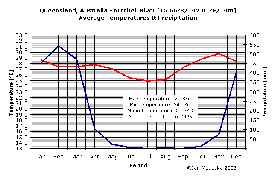 Emydura subglobosa worrelli, Diamond Head Turtle (Wells & Wellington, 1985).
Emydura subglobosa worrelli, Diamond Head Turtle (Wells & Wellington, 1985).
This species occupies permanent water only. Emydura subglobosa worrelli is present in a number of rivers in Arnhem Land. It can be found in the upper reaches of the Daly drainage, above the escarpment.
The species can be found in rivers which are greatly affected by the monsoonal wet and dry seasons. During the summer, monsoon flooding is common. In the dry season many tributaries cease flowing which greatly reduces the flow of the rivers and the distribution of turtles.
Emydura tanybaraga , Yellow-Faced Turtle (Cann, 1997)
The natural habitat of this species is similar to that of Emydura subglobosa worrelli and Emydura victoriae.
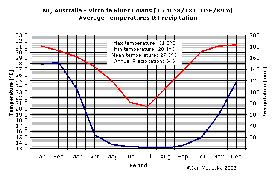 Emydura victoriae, Northern Red-Faced Turtle (Gray, 1842)
Emydura victoriae, Northern Red-Faced Turtle (Gray, 1842)
Emydura victoriae is a riverine species. It lives in the north-western Northern Territory and can be found in the Victoria River, the Daly River and the Bullo River. The species inhabits large rivers, waterholes and billabongs on their floodplains. During the dry season, Emydura victoriae prefers smaller waterholes and tends to congregate in smaller tributaries (Georges & Kennett 1989).
Emydura tanybaraga, Yellow-Faced Turtle (Cann, 1997)
Natural habitat of Emydura tanybaraga spreads across the Daly river drainage and its tributaries. In region, another two Emydura species can be found: E. subglobosa worrelli and E. victoriae.
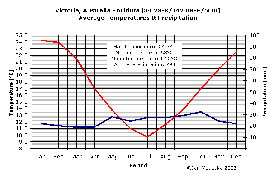
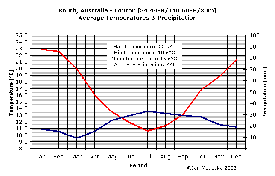 Emydura macquarii macquarii, Murray River Turtle (Gray, 1831).
Emydura macquarii macquarii, Murray River Turtle (Gray, 1831).
Natural habitat of Emydura macquarii macquarii has the greatest size out of all Emydura habitats and ranges as south as the lower Murray-Darling system at 37°S. It can be mostly found in lentic environments. In the Murray valley, the species lives in deep and slow flowing stretches of the main river channel and in deep river backwaters and oxbow adjacent to the river (Chessman 1988). The river bed is often rocky and weeds along the banks are generally sparse.
The river banks are covered with various vegetation, predominantly with rainforest (66%) followed by grassland (51%), eucalypt woodland (23%) and melaleuca forest (17%). Mangrove and salt marsh associations are not common within the estuary zone. The riparian vegetation mainly consists of Guinea grass (Panicum maximum), snakeweeds (Stachytarpheta spp.), Lantana spp., Eucalyptus spp., lawyer cane (Calamus sp.), Callitris spp., Pandanus spp., and Melaleuca spp. As for the aquatic vegetation, the species present in the river include filamentous algae, hornwort (Ceratophyllum demersum), Najas spp. and Vallisneria spp. Floating vegetation consists mainly of water-lilies (Nymphaea spp.), Azolla spp., pondweeds (Potamogeton spp.), duckweeds (Lemna, Wolffia, and Spirodela spp.) and salvinia (Salvinia molesta).
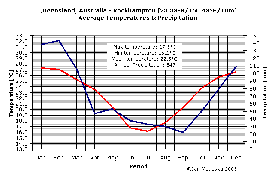
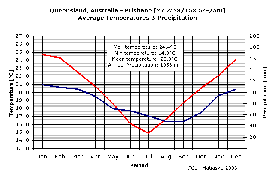 Emydura macquarii krefftii, Krefft’s River Turtle (Gray, 1871).
Emydura macquarii krefftii, Krefft’s River Turtle (Gray, 1871).
Natural habitat of Emydura macquarii krefftii spreads over the Fitzroy-Dawson drainage of Queensland. Instead of concentrating within the main water channel, the species is more abundant in small tributaries of the drainage.
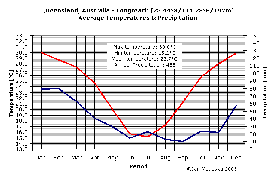 Emydura macquarii emmotti, Cooper Creek Turtle (Cann, et al, 2003).
Emydura macquarii emmotti, Cooper Creek Turtle (Cann, et al, 2003).
Natural habitat of Emydura macquarii emmotti is restricted to the Cooper Creek drainage system including tributaries. Unlike other Emydura species that inhabit the coastal drainage systems at the periphery of the Australian continent, E. macquarii emmotti inhabits the Cooper’s Creek catchments which are the easternmost part of the so called internal drainage system.
The rivers of central Australia, such as the Cooper Creek, differ from other desert rivers. While the majority of the Australian desert rivers both start and end in the arid zone, most desert rivers in other parts of the world enter deserts from rain-rich areas. As central Australia does not have a cycle of wet and dry seasons, the lack of permanent water flow in the rivers except spring is considered normal. Still, the frequency of heavy storms seems to be higher at summer when the occasional tropical cyclones drift over central Australia. The area receives the bulk of its rainfall from the northern monsoons which generally move into the area during the summer months. The northern part of the catchment can also receive heave and widespread rain from tropical cyclones which develop in the Gulf of Carpentaria. At any given location, the variability of rain is high. About 70% of all rain is received from December to April. The area is a subject to evaporation which results from high water losses from waterholes and wetlands. Due to this fact, the distribution of E. macquarii emmotti is restricted to those parts of the catchement that maintain enough water throughout a whole year.
“Australian rivers are up to 1000 times more variable in mean annual discharge than most European and North American rivers” (Gale & Bainbridge 1990). It is mostly after rainfalls that stream flow occurs. Stream flows in smaller rivers last from a few hours to a few days whereas stream flows in bigger rivers can last from a few days to a few weeks. Stream flows that last more than one month occur sporadically.
Cooker Creek has a slow stream flow with gradients as low as 1.9 cm per 1 km as a result of which it takes from one to two months for the water in the upper reaches to get to the lower reaches.
“Stream flow tends to travel slowly along the length of the river; Cooper Creek for example has gradients as low as 1.9cm/km (1.3in/mi). Thus, it may take one or two months for the water in the upper reaches to get to the lower reaches. During the floods, Cooper Creek can easily spread to the width of up to 50 km. Just like most of other Australian desert rivers, Cooker Creek contains limited amount of permanent water, which are normally concentrated in many waterholes.
According to Glover (1982) most of the rivers in central Australia have a wide range of water temperature as well as salinity.
“What little physiochemical data exists demonstrates that most water bodies have very broad temperature and salinity ranges” (Glover 1982).
“An annual temperature of the lower Cooper Creek ranges from 13 to
34°C” Doddridge (1992).
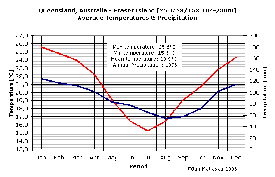 Emydura macquarii nigra, Fraser Island Turtle (McCord, et al, 2003).
Emydura macquarii nigra, Fraser Island Turtle (McCord, et al, 2003).
"Emydura macquarii nigra, the Fraser Island short-necked turtle, inhabits only permanent dune lakes and is not found in the numerous permanent streams or ephemeral ponds and swamps of the island. The dune lakes form in sand dune depressions and so are closed with surface inflows but generally no outflows. They are effectively isolated from the ocean and other waterbodies. They are dystrophic with dilute acidic waters (pH 4.0-6.0) and high accumulations of organic material of terrestrial origin (Bayly 1964; Bayly et al., 1975). The dominance of humic acids among this organic material and the relatively low pH are not conducive to bacterial degradation, so that particulate and dissolved humic compounds are metabolized only very slowly (Wetzel, 1975). The brown colour of the water severely limits penetration of light (Bayly, 1975) which, together with low concentrations of inorganic ions, restricts photosynthetic activity. Phytoplankton is poorly developed in lakes on Fraser Island (Bayly, 1964) and chlorophyll-a concentrations (Miller, 1975) fall within the range of concentrations reported for dystrophic and ultra-oligotrophic lakes elsewhere (Wetzel, 1975). Limited photosynthesis and slow bacterial degradation of the abundant humic materials presumably result in low secondary production. Low production, virtual isolation from other waterbodies, and possible direct effects of the organic acids and other secondary compounds on potential inhabitants (Janzen, 1974), explain the low biotic diversity of perched dune lakes. Highest turtle population densities occur in humified tea-coloured lakes with relatively complex littoral vegetation comprising reed beds of the genera Lepironia and Baumea. However, the less abundant turtles from the clear Lake MacKenzie are in far better condition, judged by the extent of internal fat bodies, than are those of the tea coloured lakes, so it is difficult to determine the habitat characteristics best suited to the turtles." (Georges Arthur, 1998)
Conclusion
Extensive draining of swamps and land reclamation of the areas adjacent to human populations has destroyed a substantial part of the Emydura genus natural habitat. It is up to us all to make sure this trend does not continue so that these beautiful animals are preserved in the wild.
